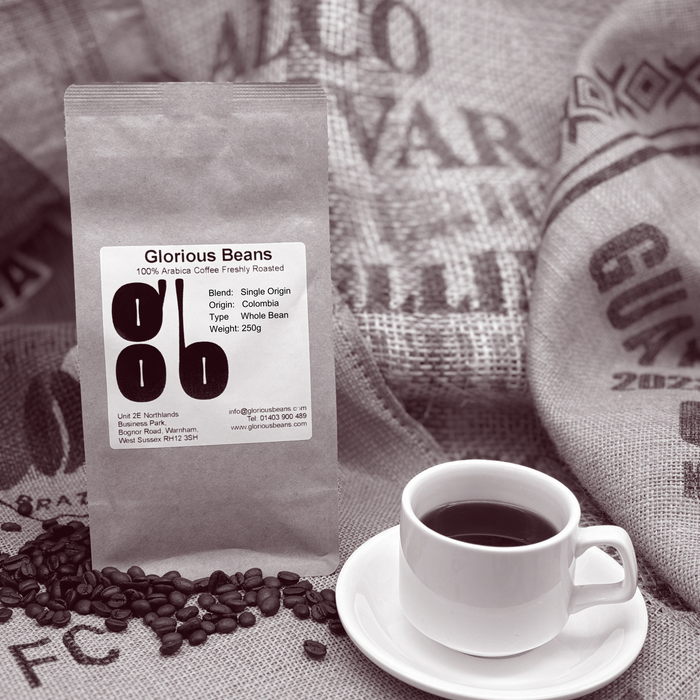How to Store SOE Single Origin Espresso for Maximum Freshness
Exploring the Abundant Tastes of Coffee Beans: a Deep Study Espresso and Blended Coffee Beans
When you discover the rich tastes of coffee beans, you reveal a complex world where each variety brings its very own character to your mug. As you browse via the art of espresso and the creativity behind mixed coffees, you'll begin to appreciate the subtleties that make each sip unique.
The Beginnings of Coffee Beans: Exploring Terroir and Flavor Profiles
When you take a sip of coffee, you're not just appreciating a drink; you're experiencing an abundant tapestry of flavors shaped by the beans' beginnings. Each region produces special taste profiles influenced by climate, altitude, and soil. As an example, beans from Ethiopia frequently break with bright, fruity notes, while those from Colombia often tend to provide a well balanced, nutty sweet taste.
As you check out different beginnings, you'll observe how terroir-- the environmental elements impacting a plant-- plays a crucial role - Single Origin Espresso. The same coffee selection can taste significantly different depending on where it's expanded
When you think about these variables, you start to value the intricacy behind your mug. Each sip informs a story of the land and the farmers who supported the beans. So, following time you delight, think of the trip your coffee took prior to it reached your hands, and savor those detailed flavors that reflect its beginning.
Recognizing Coffee: The Art and Scientific Research Behind the Mixture
When you consider coffee, it's not nearly the strong taste; it's likewise about the techniques that bring it to life. Comprehending how different prep work techniques impact taste can change your brewing experience. Let's explore the ins and outs of espresso prep work and reveal the one-of-a-kind taste accounts that make each mug special.
Coffee Preparation Techniques
Coffee prep work is both an art and a science, combining precise techniques with a deep understanding of coffee. To begin, you'll intend to select top quality, fresh baked beans and grind them finely for optimal extraction (Single Origin Espresso). The work dimension is essential; as well crude, and your coffee will certainly be weak, too great, and it'll be bitter
Following, tamp the premises equally in the portafilter to ensure uniform extraction. When you secure it into the equipment, go for a developing temperature in between 190 ° F and 205 °
F.As you pull the shot, watch for the best extraction time-- around 25-30 seconds. The result needs to be an abundant, luscious espresso with a lovely layer of crema on top. With technique, you'll grasp these strategies.
Taste Accounts Clarified
The world of espresso uses a rich tapestry of flavor profiles that can raise your coffee experience. Light roasts typically display intense acidity and vivid flavors, while dark roasts present much deeper, bolder tones.
A well-crafted mix may harmonize the bright notes of an Ethiopian bean with the abundant, chocolatey touches of a Brazilian bean. Accept the journey of finding espresso's varied tastes, and you'll change your coffee routine right into an interesting adventure.
Handling Methods: Exactly How They Impact Taste and Scent
While it may appear that the origin of coffee beans is one of the most considerable consider determining their flavor and scent, the handling methods utilized post-harvest play a similarly necessary duty. You'll find that these approaches can substantially change the final taste profile of your mug.
For circumstances, the washed procedure removes the fruit from the beans prior to fermentation, commonly bring about a cleaner, brighter flavor. The natural process leaves the fruit undamaged during drying out, resulting in a sweeter, fruitier profile.
Other approaches, like honey processing, strike an equilibrium, enabling some fruit mucilage to stay, supplying an one-of-a-kind complexity.
Each processing method engages with the beans' intrinsic features, boosting or silencing details tastes and fragrances. So, when you drink that espresso or mixed coffee, bear in mind that the journey from cherry to cup is affected not just by beginning however also by just how those beans were refined.
Toasting Methods: Unlocking the Complete Possible of Coffee Beans
Roasting methods are important for exposing the complete possibility of coffee beans, as they change raw, green beans into the aromatic, tasty coffee you enjoy. The choice of roasting technique-- light, tool, or dark-- considerably affects flavor profiles. Light roasts preserve the beans' natural acidity and fruity notes, while tool roasts balance sweetness and richness. Dark roasts, on the other hand, highlight bold, great smoky tastes.
You can trying out toasting temperatures and times to find your ideal brew. A slower roast at reduced temperatures permits complicated flavors to create, while a quicker roast can intensify anger. Take notice of the cracks during roasting; the very first crack shows a light roast, while the 2nd fracture signals a dark roast. By mastering these techniques, you'll disclose a world of flavor, boosting your coffee experience to brand-new heights. Enjoy every sip, knowing the treatment that entered into your mug!
The Magic of Blended Coffee: Producing One-of-a-kind Taste Experiences
Developing an unique taste experience with blended coffee can change your morning ritual into an exploration of preference. By integrating different beans from different areas, you can expose a harmony of flavors that boost your cup to new heights. Each mix offers a distinct account, balancing acidity, sweet taste, and body to create something absolutely special.
When you choose a blend, you're not simply picking a coffee; you're choosing a journey throughout varied landscapes and societies. Experimenting with various mixes allows you to find your individual favorites, whether you appreciate fruity notes or rich, chocolatey undertones.

Sampling Notes: Recognizing the Nuances in Your Cup
As you drink your coffee, you could notice a spectrum of flavors dancing on your taste buds, each disclosing the complexities of the beans. You may taste the intense level of acidity reminiscent of citrus or the deep, rich notes comparable to dark delicious chocolate. The sweetness might stimulate honey or sugar, stabilizing the total account magnificently.
Focus on the body of the coffee-- does it feel light and airy, or is it complete and creamy? The coating, as well, supplies ideas; a remaining aftertaste might hint at nuttiness or floral touches.

Do not neglect to explore the one-of-a-kind features of various origins, as each area imparts distinct flavors - Single Origin Espresso. Ethiopian coffees commonly present fruity notes, while Colombian beans may display an extra rounded sweetness. By acknowledging these subtleties, you'll grow your admiration for each mug, elevating your coffee experience to new heights

Developing Approaches: Making The Most Of Flavor Extraction for Every Bean
When you discover the numerous developing techniques, you'll find that each technique can considerably impact the taste account of your coffee. From French press to pour-over, each method removes various substances, improving or muting particular notes. Utilizing a French press enables oils to continue to be in the mixture, creating a richer preference, while pour-over emphasizes quality and illumination.
Temperature level and grind size likewise play important duties. A coarser grind functions best for cool brews, while a great work is suitable for espresso. Try out water temperature level-- between 195 ° F and 205 ° F-- can expose surprise flavors, as well.
Do not forget steeping time; a quick removal can lead to sour notes, while over-extraction may generate bitterness. By changing these variables, you can maximize flavor extraction and absolutely elevate your coffee experience. Take pleasure in the trip of discovering what technique finest matches your palate!
Frequently Asked Concerns
What Is the Suitable Water Temperature Level for Developing Coffee?
The optimal water temperature level for developing coffee's in between 195 ° F and 205 ° F. If you make use of water that's too hot, you'll over-extract flavors; as well cool, and you will not extract enough. Aim for that wonderful place for the very best mixture!
How Does Grind Dimension Impact Coffee Taste?
Work dimension considerably affects coffee flavor. Finer grinds extract a lot more oils and tastes, causing a bolder preference, while coarser grinds return a lighter taste. Readjusting grind size assists you accomplish your wanted coffee profile.
Are There Health Perks Associated With Alcohol Consumption Coffee?

What Is the Difference Between Arabica and Robusta Beans?
Arabica beans are smoother and additional hints sweeter, frequently featuring fruity flavors, while robusta beans are more powerful with a bitter preference and greater high levels of caffeine content. You'll discover these differences in scent and developing experience.
Just How Can I Shop Coffee Beans for Freshness?
To keep coffee beans for navigate here freshness, keep them in a closed container, far from light, warmth, and dampness. If you just grind what you need right prior to brewing., you'll preserve their taste much longer.
Exploring the Abundant Flavors of Coffee Beans: a Deep Dive Into Coffee and Blended Coffee Beans.
When you discover the rich tastes of coffee beans, you discover a complex globe where each variety brings its very own character to your mug.When you take a sip of coffee, you're not just enjoying a beverage; you're experiencing a rich tapestry of tastes shaped by the beans' origins.Roasting techniques are vital for revealing the full possibility of coffee beans, as they transform raw, green beans into the fragrant, tasty coffee you enjoy.As you sip your coffee, you could discover a range of flavors dancing on your taste buds, each disclosing the complexities of the beans.